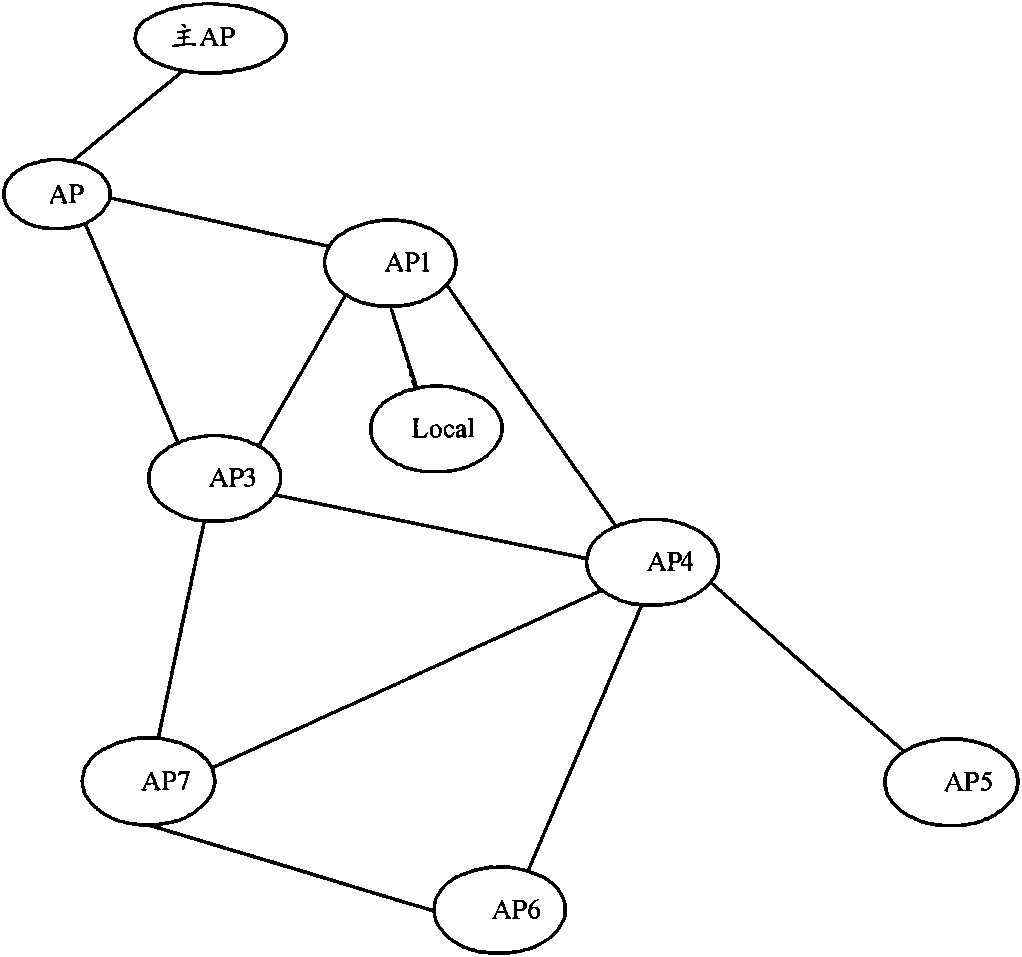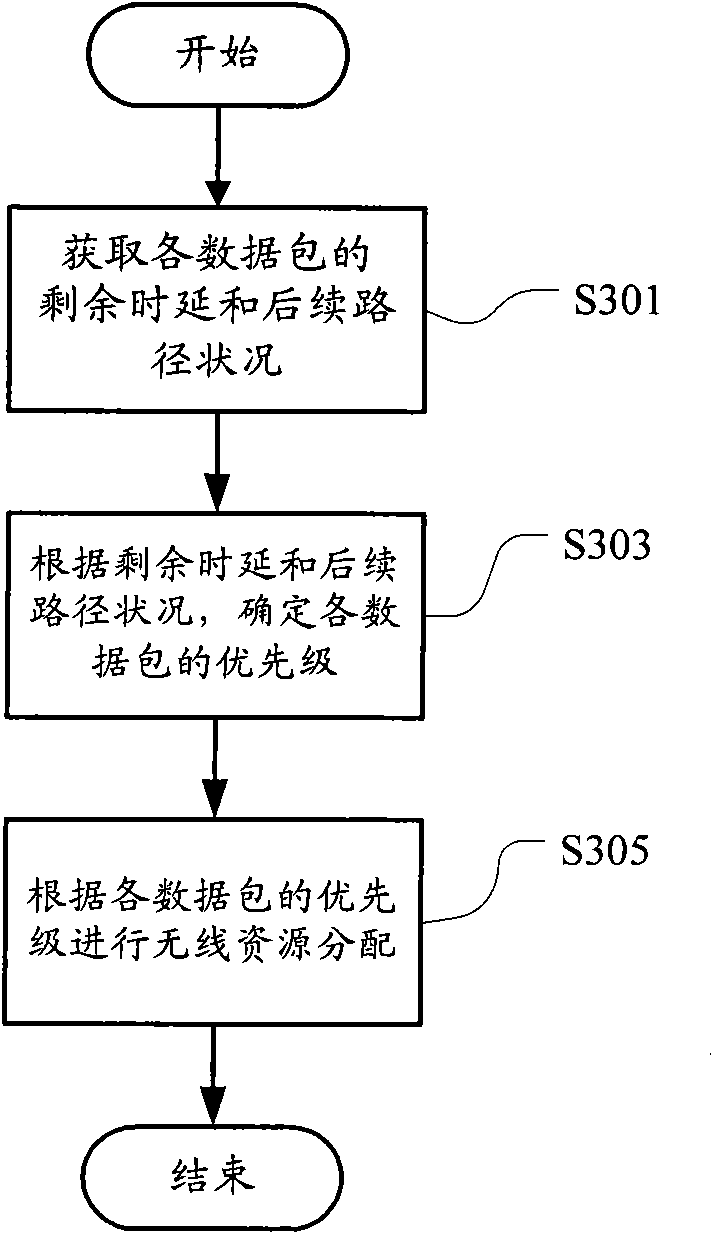Method for packet scheduling of multi-hop network and node device
A packet scheduling and multi-hop network technology, applied in the field of communication, can solve the problems that the packet loss rate of the system cannot be guaranteed, and the packet scheduling method cannot meet the requirements of multi-hop network fairness and network resource utilization, so as to reduce the dropped rate. Effects of probability, avoiding waste, and ensuring fairness
- Summary
- Abstract
- Description
- Claims
- Application Information
AI Technical Summary
Problems solved by technology
Method used
Image
Examples
Embodiment 1
[0038] image 3 It is a flow chart of the multi-hop network packet scheduling method in Embodiment 1 of the present invention, such as image 3 As shown, this embodiment includes:
[0039] Step S301: Obtain the remaining delay and subsequent path status of each data packet;
[0040] Step S303: Determine the priority of each data packet according to the remaining delay and subsequent path conditions;
[0041] Step S305: Perform wireless resource allocation according to the priority of each data packet.
[0042] The method proposed in this embodiment takes into account subsequent path conditions and remaining time delays of data packets when performing packet scheduling. The subsequent path condition may include: the subsequent hop count of the data packet and / or the node load of the subsequent path, and the like. The method proposed in this embodiment can effectively guarantee the fairness of the delay in the data packets with different follow-up path hops and / or follow-up ...
Embodiment 2
[0044] Figure 4 It is a flow chart of the multi-hop network packet scheduling method in Embodiment 2 of the present invention, such as Figure 4 As shown, this embodiment includes:
[0045] Step S401: Obtain the remaining delay, previous path status and subsequent path status of each data packet;
[0046] Step S403: Determine the priority of each data packet according to the remaining delay, previous path conditions and subsequent path conditions;
[0047] Step S405: Perform wireless resource allocation according to the priority of each data packet.
[0048] After the data packets are scheduled in step S405 in this process, return to step S401 to start the next round of packet scheduling.
[0049] On the basis of the first embodiment, the method proposed in this embodiment further considers the status of the previous path of the data packet when performing packet scheduling. Previous path conditions may include: number of hops the packet has completed, data flow rate, and...
Embodiment 3
[0051] Figure 5 It is a flow chart of the multi-hop network packet scheduling method according to Embodiment 3 of the present invention. This example is for image 3 and Figure 4 The embodiment is further refined, adding processing operations when two or more data packets have the same priority. Such as Figure 5 As shown, this embodiment includes:
[0052] Step S601: Obtain the remaining delay, previous path status and subsequent path status of each data packet;
[0053] Step S603: Determine the priority of each data packet according to the remaining time delay, previous path conditions and subsequent path conditions;
[0054] Step S605: judging whether multiple data packets have the same priority, if not, proceed to step S617, otherwise proceed to step S607;
[0055] Step S607: For data packets with the same priority, determine the priority again according to the previous path condition;
[0056] Step S609: judging whether multiple data packets have the same priorit...
PUM
 Login to View More
Login to View More Abstract
Description
Claims
Application Information
 Login to View More
Login to View More - R&D
- Intellectual Property
- Life Sciences
- Materials
- Tech Scout
- Unparalleled Data Quality
- Higher Quality Content
- 60% Fewer Hallucinations
Browse by: Latest US Patents, China's latest patents, Technical Efficacy Thesaurus, Application Domain, Technology Topic, Popular Technical Reports.
© 2025 PatSnap. All rights reserved.Legal|Privacy policy|Modern Slavery Act Transparency Statement|Sitemap|About US| Contact US: help@patsnap.com



